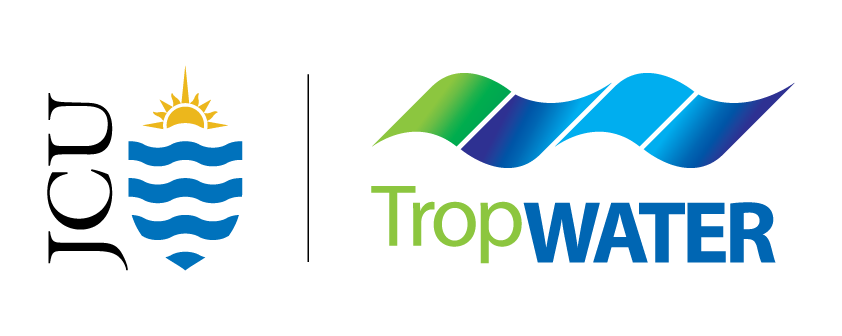
Gladstone, Hay Point, Mackay, Abbot Point, Townsville, Mourilyan Harbour, Cairns, Thursday Island, Weipa and Karumba
Location
We lead long-term monitoring and assessment programs in all of Queensland’s tropical trading ports, including assessments of seagrass, ambient water quality, and coral.
Environmental monitoring and management help ports better manage their environment and nearby coastal ecosystems – our science provides the solutions industry needs for improved environmental outcomes.
Our teams inform port management, guide government policy, contribute to regional report cards, and lead innovative research.
Key points
Long-term monitoring for port industries: coral, water quality, seagrass, and biodiversity
Partnering with ports for environmental management
The expansion and maintenance of port facilities across northern Australia is a high-profile environmental issue, especially on the Great Barrier Reef coast, where there are 12 trading ports. Port activities like dredging and shipping can damage seagrass, coral, and marine life if not carefully managed.
We have strong partnerships with port authorities in the region, founded on our long-term monitoring programs that provide crucial data to inform port management as well as contributing to significant applied research programs.
Monitoring seagrass
We annually monitor seagrass at 10 ports across Queensland and conduct baseline assessments and mapping in the majority of ports throughout the state – assessing over 1,660 square kilometres of seafloor.
Seagrass monitoring is our most established long-term program and among the longest continuous seagrass monitoring efforts worldwide. For decades, these programs have been delivering valuable data that inform management decisions, feed into state and environment reporting, and advance understanding tropical seagrass ecology.
We use the following methods:
Intertidal seagrass meadows are surveyed by helicopter.
Subtidal meadows are surveyed from boats using drop cameras or sled tows.
Seagrass meadow characteristics are recorded, such as meadow area, species composition, above-ground biomass and sediment type.
Each year we survey key meadows near port infrastructure and reference sites, and every three years we complete surveys of all seagrass meadows within port limits.
This long-term monitoring program provides valuable insights into seagrass meadow dynamics, including seasonal and year-to-year changes as well as impacts from extreme weather events. Data on seagrass health and resilience ensures port activities are not impacting seagrass meadows and allows for strategic planning of maintenance dredging and infrastructure development.
Monitoring ambient water quality
Flood events, runoff from catchments and port activities such as dredging and shipping can all increase turbidity, reduce light, and alter nutrient and chemical balances. This can reduce water quality and impact seagrass, coral, and marine life.
Since 2014, We’ve monitored water quality in ports since 2014, and now survey over 100 km of coastline at 12 sites.
Every 10 minutes, loggers on the seafloor at sites close to seagrass and coral reefs measure:
Water turbidity.
Light.
Temperature.
Depth.
Wave pressure.
Every eight weeks, we record:
Water temperature.
Chemistry (including nutrients and heavy metals).
Dissolved oxygen and pH.
Electrical conductivity.
This work helps us to understand ambient conditions and to guide decision-making for port-related activities.
Monitoring inshore coral
Inshore reefs located close to ports infrastructure can be at increased risk of biodiversity loss and coral habitat health decline associated with poor water quality. As part of our monitoring program, we work with port authorities and regulators to provide reliable data on long-term coral health.
We monitor inshore coral reefs twice a year at three ports: Abbot Point, just north of Bowen, and the ports of Hay Point, and Mackay in central Queensland. This program fills critical gaps in monitoring data of inshore reefs in the central and southern Great Barrier Reef.
Our team measures the following at multiple reef locations in each port:
Coverage of coral and other reef communities.
Juvenile hard coral recruitment.
Signs of stress including bleaching, disease, sediment deposition and damage, corallivorous Crown of Thorns starfish, and Drupella snails.
This work provides valuable data on inshore coral conditions to understand natural fluctuations and responses to environmental disturbance. These findings can then inform coral health monitoring and management in areas potentially impacted by port expansion or dredging.
Investigating biodiversity
Alongside our long-term monitoring programs, we are investigating the biodiversity within port infrastructure. This helps us better understand what species are present, how they are using these environments and how we can improve human-made infrastructure to support marine species.
This work includes:
Using satellite and acoustic tags to track manta rays and understand populations and movements around Abbot Point.
Informing better design of seawalls by investigating the thermal tolerance of oysters – with findings showing that oysters avoid the high temperatures of sun-facing seawall boulders.
Underwater video surveys and side-scanning sonar to understand fish communities around port facilities.
Developing artificial intelligence (AI) approaches to automate image processing for video surveys.
Partnering for impact
The impact of this long-term monitoring extends beyond the programs to contribute to regional reporting and form the basis of cutting-edge research.
Each of the monitoring programs provides valuable data to regional report cards on waterway health. The report cards are a key annual update on the health of the region’s waters, with our monitoring programs contributing significantly to the marine scores each year.
Our monitoring programs and ports partnership have also formed the foundation of additional research projects and collaborations, including an Australian Research Council Industry Linkage Grant on restoring and future-proofing seagrass, a project using novel tools to assess the fish and crustaceans using these habitats, and Project Blueprint.
Project details
This work is conducted in partnership with North Queensland Bulk Ports Corporation, Ports North, the Port of Townsville, and Gladstone Ports Corporation.







Research support


Research leads



















